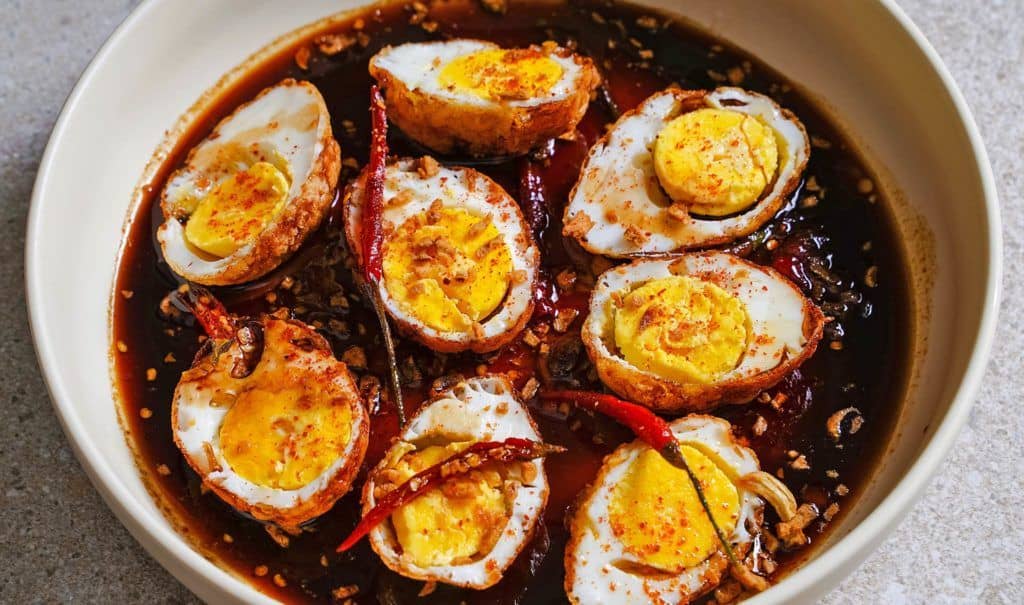Korean steamed eggs (gyeran-jjim) lie halfway between an eggy soup and a silky custard. Like Japanese chawan mushi and Chinese zheng shui dan, it’s extremely cheap and dead simple to make. Once you master the recipe, customize it however you want: replace the water with stock, add chili flakes, or adjust the egg-water ratio. Enjoy as an appetizer or as a simple meal, served with hot rice.
A traditional ttukbaegi makes this dish a one-pot affair you can cook in and eat straight out of. Rinse and repeat for round two, if you’re hungry.
Combine eggs, water, and spring onions in ttukbaegi. Season with a splash of fish sauce.
Place ttukbaegi over medium heat and cook, stirring frequently, until the egg mixture forms large curds and the top is almost set.
Reduce heat to low, cover, and cook until set, 8–10 minutes.
Drizzle sesame oil over eggs and garnish with sesame seeds. Serve immediately while hot.
A ttukbaegi is a traditional Korean earthenware pot. Its heat retention properties makes it great for serving stews and soups. Even when removed from the stove, foods maintain a bubbling boil.
Filipino stews and soups would cook wonderfully in a ttukbaegi, too!
You can use a heat-safe ramekin in a pinch. Fill only 80% of the ramekin with the egg mixture.
We highly recommend Ottogi sesame oil. It's pricier than Lee Kum Kee, but even a small amount packs much more flavor, making it worth the splurge. It's deeper, nuttier, and functionally better as a finishing oil.
You can season your eggs with salt, but you'll lose some that distinct umami flavor from fish sauce!
